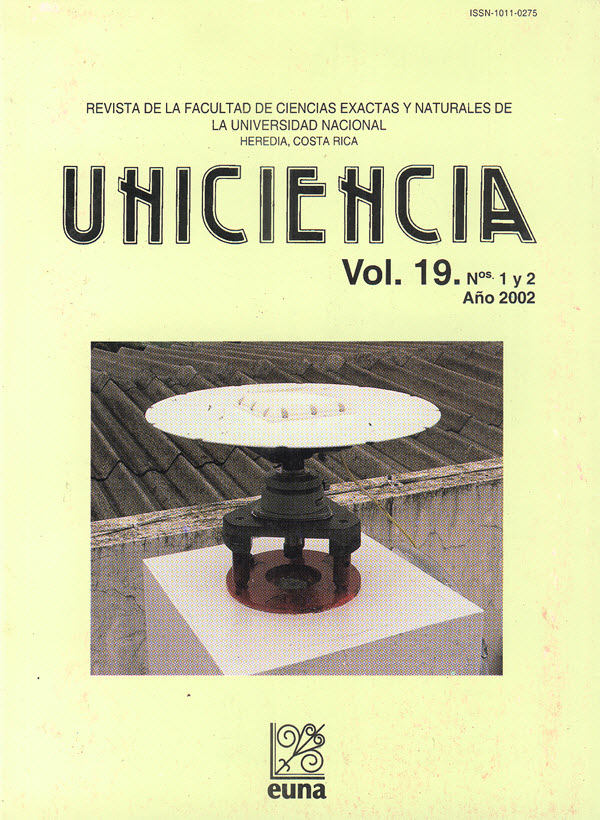Germinación y micropropagación de ficus obtusifolia, F. Jimenezii y F. Morazaniana (Moraceae) (ING)
Keywords:
Moraceae, figs, Ficus jimenezii, Ficus obtusifolia, Ficus morazaniana, micropropagation, germination.Abstract
Germination and in vitro culture of three species of figs: Ficus obtusifolia Kunt, F. jimenezii Standl and F. morazaniana Burger were studied Semi-ripen seeds of these species were distributed in four types of substrates (culture medium, sand, soil and newspaper) under three different conditions (in vitro, ambient and greenhouse). In vitro germination and micropropagation was only possible in F. jimenezii due to the fact that seeds of the other species presented high bacterial contamination. This was also the best method for the production of this species. The newspaper substrate showed high germination percentages in the three test species and this facilitated the transference of plantlets to other substrates for their growth under in vitro conditions. F. obtusifolia and F. jimenezii showed the lowest germination percentages in the sand substrate 60% y 10% respectively. The germination of F. obtusifolia and F. morazaniana was possible in pots under greenhouse conditions but the plantlets growth was lower with respect to other methods evaluated. For those plantlets germinated under ambient conditions the best growth was obtained in closed flasks with pit substrate placed in a growth chamber with a photoperiod of 16 hrs light and a light intensity of 30 μE m-2s-1. Plants developed well in the greenhouse where they were fertilized and grew for a period of 12 months.
Downloads
Published
Issue
Section
License
Authors who publish with this journal agree to the following terms:
1. Authors guarantee the journal the right to be the first publication of the work as licensed under a Creative Commons Attribution License that allows others to share the work with an acknowledgment of the work's authorship and initial publication in this journal.
2. Authors can set separate additional agreements for non-exclusive distribution of the version of the work published in the journal (eg, place it in an institutional repository or publish it in a book), with an acknowledgment of its initial publication in this journal.
3. The authors have declared to hold all permissions to use the resources they provided in the paper (images, tables, among others) and assume full responsibility for damages to third parties.
4. The opinions expressed in the paper are the exclusive responsibility of the authors and do not necessarily represent the opinion of the editors or the Universidad Nacional.
Uniciencia Journal and all its productions are under Creative Commons Atribución-NoComercial-SinDerivadas 4.0 Unported.
There is neither fee for access nor Article Processing Charge (APC)






